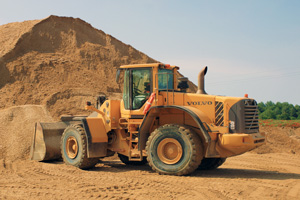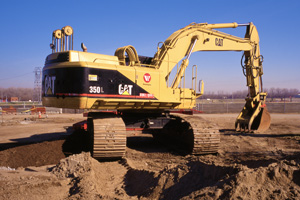

Know the Machines, Own the Job Site
You wouldn’t hire a chef who can’t use a stove. So why would you trust a civil engineer, site planner, or construction manager who doesn’t understand the machines shaping the ground they’re building on?
In civil construction, machinery isn’t just equipment, it’s the muscle that turns drawings into reality. From grading a road to laying the foundations for high-rise infrastructure, every project depends on the safe, efficient operation of heavy machines. And even if you’re not planning to sit in the driver’s seat yourself, knowing how these machines work, and what they’re capable of, makes you a smarter planner, a more effective communicator, and a better leader on site.
Whether you’re mapping out road alignments, managing timelines, or physically moving dirt as an operator, understanding civil machinery is a non-negotiable advantage in today’s industry. It helps you solve problems faster, speak the same language as your crew, and make better decisions under pressure.
Plus, if you do want to operate, there’s no better way to boost your career trajectory than by learning these machines from the ground up. It shows initiative, builds confidence, and opens up direct employment opportunities in everything from civil contracting to large-scale mining.
Here are five essential machines every civil engineering student, aspiring operator, or future site supervisor should know inside and out, and why mastering them can help you move from student to standout.
1. The Excavator – The Backbone of the Job Site
If there’s one machine that earns its keep on every civil and mining site, it’s the excavator. Known as the workhorse of the industry, excavators come in a range of configurations, from compact models ideal for urban jobs to full-size, long-reach units used on major infrastructure and mining projects.
What it does:
Excavators are built for versatility. They dig, they lift, they load, and with the right attachment, they even break rock or drill holes. Their hydraulic arms, capable of highly precise movements, make them perfect for tasks like:
- Digging trenches for utilities
- Laying building foundations
- Clearing land and debris
- Breaking up concrete and rock
- Loading dump trucks for haulage
In large-scale projects, especially mining, the excavator becomes a key player in material movement. Operators are expected to maintain rhythm and accuracy across entire shifts, often responsible for loading dozens of dump trucks per day with minimal spillage and no damage to gear. That level of trust only goes to those who’ve trained properly and can demonstrate confidence under pressure.
Why it matters:
Excavators are everywhere. From residential civil works to multi-million-dollar road builds, they’re often the first machine on-site and the last to leave. For civil engineering students and aspiring site leaders, understanding how an excavator functions, boom movement, bucket control, swing radius, load limits, is foundational.
Even if you never plan to operate one full-time, knowing the capabilities and limits of this machine allows you to:
- Plan projects more realistically
- Communicate clearly with operators
- Design safer, more efficient work zones
Pro Tip:
Don’t stop at basic operation. Learn how to use attachments like:
- Augers for drilling
- Breakers for demolition
- Tilt buckets for fine grading and shaping
These tools massively expand the machine’s value and show employers you’re thinking like a multi-skilled operator, not just a box-ticker.
Bottom line? Mastering the excavator gives you credibility on any job site, and in many cases, it’s the difference between being a student of the trade and a leader in the making.
2. The Bulldozer – Power Meets Precision
When it comes to sheer power, few machines can match the bulldozer. With its wide steel blade up front and rugged tracks beneath, the dozer is built to muscle through the toughest terrains. But don’t let its size fool you, this isn’t just a brute-force tool. A well-operated dozer is as much about precision as it is about pushing power.
What it does:
Bulldozers are the go-to machines for major groundwork and surface preparation. You’ll find them:
- Pushing and spreading earth, rubble, and rock
- Clearing vegetation and debris
- Building and maintaining haul and access roads
- Grading and shaping slopes and embankments
- Backfilling and preparing pads for construction
There are different blade types (S-blade, U-blade, SU-blade) and ripper attachments that expand the machine’s capabilities even further, especially in tough subsoil or rock conditions.
Why it matters:
Operating a dozer isn’t just about smashing through dirt. It’s about reading the land, understanding cut and fill levels, and shaping surfaces to exact specifications. A dozer operator is often responsible for setting the pace of a project, cutting new roads, preparing surfaces for compaction, or maintaining the site’s flow of machinery.
Mistakes are costly. A dozer that overcuts, damages subgrades, or pushes uneven fill can delay entire project phases. That’s why skilled dozer operators are in high demand, not just for their strength, but for their judgment.
Employers know:
A good dozer operator can make or break a day’s productivity. They keep the site on grade, the schedule on track, and the rest of the crew moving forward. For civil engineering students, understanding dozer mechanics and control logic builds an essential layer of site knowledge, and for future operators, it’s a powerful stepping stone to higher-paying roles and broader responsibilities.
3. The Grader – For the Perfect Finish
The grader doesn’t roar into action like an excavator or bulldozer, but make no mistake, it’s one of the most technically demanding and respected machines on site. Built for control and accuracy, the grader is responsible for the final finish that determines whether a project hits spec, or hits delay.
What it does:
Motor graders use a long blade positioned between the front and rear axles to fine-tune surfaces. They are typically used for:
- Precision grading and levelling of roads and pavements
- Shaping and maintaining drainage slopes and cambers
- Trim work prior to laying concrete or bitumen
- Reworking haul roads and keeping site access smooth and safe
Modern graders often feature advanced hydraulics, joystick steering, and increasingly, GPS or laser-guided control systems. These technologies allow for millimetre-perfect accuracy, essential on major infrastructure projects or high-spec developments.
Why it matters:
Grading is one of the last stages before the next trades move in. Whether it’s a road base, building pad, or final site grade, it must be spot-on. Too high, and you’ll need to rework the fill. Too low, and you risk drainage issues or structural failures.
That’s why skilled grader operators are among the highest-paid machinery roles in civil construction, and why employers pay close attention to who’s controlling the blade. You’re not just moving dirt, you’re shaping the foundation of everything that follows.
Bonus Insight:
If you’re eyeing a leadership role, grader experience is gold. Operators who can manage precision grading often become team leads, project foremen, or even site supervisors. Why? Because they understand the big picture. They know tolerances, schedules, safety zones, and how to guide a crew to a flawless finish.
For civil engineering students, learning how a grader operates builds respect for the precision required to complete a job to code. For future operators, it’s a gateway to the most respected, and financially rewarding, roles in machinery.
4. The Front-End Loader – Your Gateway to Bigger Roles
If you’re stepping into the world of civil construction or mining, the front-end loader is one of the first machines you should get to know. Built for lifting, loading, and shifting bulk materials, it plays a vital role on nearly every job site.
- Main jobs: Moving earth, stockpiling material, loading trucks, site clean-up.
- Where it’s used: Everywhere, from residential construction and roadworks to large-scale mining operations.
 Why it matters: The loader is often your entry point into heavy machinery, and mastering it builds the fundamental skills you’ll need for more advanced equipment.
Why it matters: The loader is often your entry point into heavy machinery, and mastering it builds the fundamental skills you’ll need for more advanced equipment.
Want to become an excavator operator?
Training on a loader is a smart stepping stone. On mining sites, excavator operators hold one of the most critical roles, they’re responsible for accurately and efficiently loading trucks, sometimes up to 50 dump trucks per shift. That kind of volume demands precision, timing, and top-tier skills.
Start with the loader, and you’ll not only become more employable, you’ll build the foundation for one of the highest-responsibility jobs in the industry.
5. The Skid-Steer – Small But Mighty
Compact, nimble, and surprisingly powerful, the skid-steer loader is proof that size isn’t everything on a construction site. While it might look like the underdog next to a hulking dozer or excavator, the skid-steer punches well above its weight when it comes to productivity.
What it does:
Skid-steers are used for:
- Site clean-up and backfilling
- Landscaping and ground shaping
- Interior demolition and material removal
- Lifting, loading, and transporting supplies in confined areas
Their real superpower lies in their attachment versatility. With the right tools fitted, one machine can switch roles in seconds, becoming a mini-dozer, a trencher, a broom, or even a post-hole digger.
Why it matters:
Skid-steers are often the first machine students operate in a civil machinery course, and for good reason. They’re small enough to learn on safely, but complex enough to teach:
- Basic control principles
- Attachment handling and changeovers
- Spatial awareness on a busy site
- Ground pressure and load balance techniques
These are the exact skills that scale up to larger machines like front-end loaders and dozers. If you can master precision and control in a tight skid-steer cab, you’re better prepared for anything the job site throws at you.
“First machine confidence starts here.”
Mastering the skid-steer is more than just a box ticked, it’s your confidence builder. It sets the tone for your entire machinery journey and gives you an early taste of what it means to move with purpose, think ahead, and adapt on the fly.
Learn These Machines, Land the Job
These five machines, excavators, dozers, graders, front-end loaders, and skid-steers, aren’t optional extras. They’re core components of nearly every civil project in Australia, from bulk earthworks to high-density urban builds. Understanding how they work, where they shine, and how to operate them safely is essential for anyone looking to step confidently into the industry.
Want to go from zero to job-ready?
A high-quality civil machinery course gives you:
- Real seat time on real, mine-spec equipment
- Nationally recognised certifications
- A learning environment that builds both technical skill and site confidence
Coming up in Part 4:
“The Shocking Truth About Most Civil Machinery Courses (And What to Look for Instead)”
Not all training is created equal. In the next post, we’ll uncover what many civil machinery programs get wrong, and how to spot a course that actually prepares you for real job sites, real challenges, and real careers.

